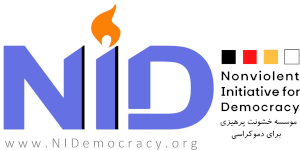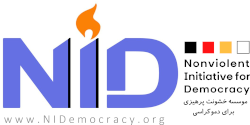by: Michael Nagler
The spirit of democracy cannot be imposed from without. It has to come from within. ~ Gandhi
In a July 2005 study titled “How Freedom is Won: From Civic Struggle to Durable Democracy,” Freedom House found that in 50 of the 67 transitions from authoritarianism to democracy that had taken place in the prior 33 years, nonviolent civic resistance was a “key factor,” while when the opposition movements used violence, the chances for liberation were greatly reduced. Such revelations were carried forward a few years later with Erica Chenoweth and Maria J. Stephan’s landmark book, Why Civil Resistance Works: The Strategic Logic of Nonviolent Conflict. Their research showed that:
nonviolent insurrections (meaning popular movements relying on strikes, protest marches and the like) were twice as successful as those that used armed struggle;
in general, nonviolence forms of resistance took one third the time (an average of three as opposed to nearly 10 years), and most surprising (but perfectly logical from the standpoint of nonviolence theory);
they led to greater democratic freedoms, even when they “failed,” than armed struggles that “succeeded.”
What is the affinity between nonviolence and democracy? This is quite an important question, because there’s an intuitive resonance between those two great concepts but many people remain enthralled by the widespread myth that “freedom” must be won and kept by force. It would be very liberating to explode that myth!
We say that democracy as a political system — as we’ll see, it has other manifestations that are possibly more important — was invented by the Greeks. Their word for it, δημοκρατία, means “rule by the dēmos” (δῆμος), the people who make up a given community or district. They have the ultimate authority (κράτος). The implication — though it would take many centuries to implement this — was inherently that all people, by virtue of being human beings, had the right and the competence to play an active role in determining the customs and policies of the community of which they were an integral part. A further implication is that each person has a natural agency that should not be abrogated by the political order.
It is with this assertion of individual human dignity that we see the fundamental connection between democracy and Gandhian nonviolence. I specify “Gandhian” because for some, nonviolence (or non-violence) means only a set of techniques without reference to the deep philosophical background it conveyed to Gandhi and those of his persuasion. His vision of the sanctity of life and its location within the human individual is actually the key to what we nowadays call the “New Story,” or paradigm shift back to an exalted vision of the human being, a vision commonly held before the industrial revolution. This higher image of humans was the cornerstone of Gandhi’s economics, his religion and his belief that a democratic order was the political system toward which human society was, with many setbacks, trying to evolve.
Most of us in the West would agree with him on that last point. Few of us will follow him, though, where he felt that, while some kind of democracy was the fittest political expression of nonviolence, the converse was equally true: No perfect democracy is possible without a perfect non-violence at the back of it. Is this not why in the United States, which Martin Luther King, Jr. reluctantly called “the greatest purveyor of violence in the world,” we are watching the features of our democracy slip relentlessly away?
The spirit of democracy is not a mechanical thing to be adjusted by abolition of forms. It requires change of heart. ~ Gandhi
But is it possible to defend a democracy without violence? Well, can you defend it any other way? The fact is, most of the major institutions that make up our political and social order already have functioning nonviolent alternatives, the significance of which is largely not understood. We have:
Restorative Justice here and there that could make mass incarceration obsolete;
a wide array of grassroots, not greed-based, economic experiments
civil disobedience: the duty of every citizen when injustice occurs in an otherwise democratic order and even
the beginnings of Unarmed Civilian Peacekeeping that in the long run could replace war.
There is a conspicuous absence from this list this election year: civil discourse. Democracy and nonviolence are not just methods of struggle, they’re ways of discovering truth — of allowing the truth of each individual to be registered in the whole. When asked by a journalist to say something about his “opponent,” Kathleen Brown, during the 1994 gubernatorial race in California, Tom Hayden startled the journalist when he shot back, “She’s not my opponent; she’s my friend. We’re running for governor. It isn’t a sport.” Much less a fight. Until we realize the civility aspect of nonviolence as well, our claim to be a democracy will be increasingly hollow.
Equally rooted in the inalienable dignity of the human being that is the core of the “new” story, nonviolence and democracy, when properly understood, imply each other. They are really two sides of the same coin. We can’t have one without the other, and we badly need both.



